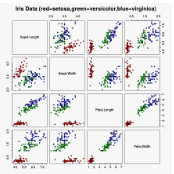Approximately 15% of the world's population is suffering from various disabilities or impairments. However, many mobile UX designers and developers disregard the significance of accessibility for those with disabilities when developing apps. A large number of studies and some effective tools for detecting accessibility issues have been conducted and proposed to mitigate such a severe problem. However, compared with detection, the repair work is obviously falling behind. Especially for the color-related accessibility issues, which is one of the top issues in apps with a greatly negative impact on vision and user experience. Apps with such issues are difficult to use for people with low vision and the elderly. Unfortunately, such an issue type cannot be directly fixed by existing repair techniques. To this end, we propose Iris, an automated and context-aware repair method to fix the color-related accessibility issues (i.e., the text contrast issues and the image contrast issues) for apps. By leveraging a novel context-aware technique that resolves the optimal colors and a vital phase of attribute-to-repair localization, Iris not only repairs the color contrast issues but also guarantees the consistency of the design style between the original UI page and repaired UI page. Our experiments unveiled that Iris can achieve a 91.38% repair success rate with high effectiveness and efficiency. The usefulness of Iris has also been evaluated by a user study with a high satisfaction rate as well as developers' positive feedback. 9 of 40 submitted pull requests on GitHub repositories have been accepted and merged into the projects by app developers, and another 4 developers are actively discussing with us for further repair. Iris is publicly available to facilitate this new research direction.
翻译:暂无翻译



